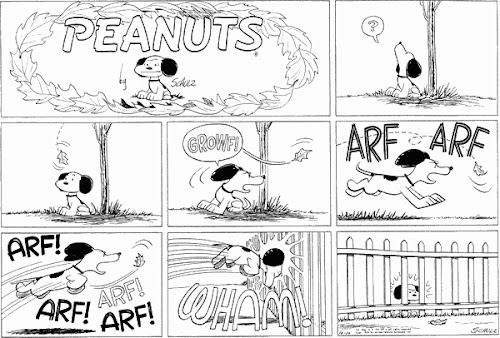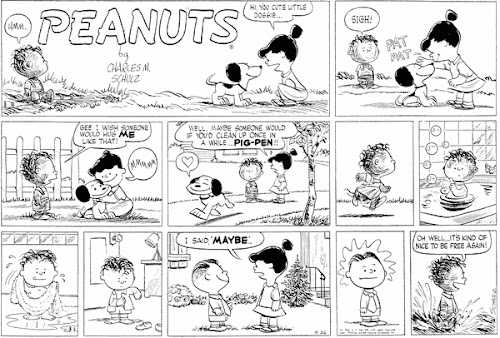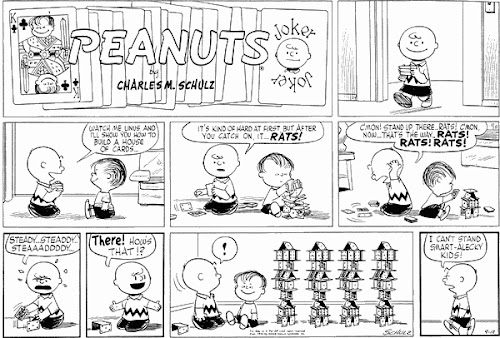There is a role-playing game out there called Call of Cthulhu, which involves players encountering horrible creatures from beyond time and space. That game gives players a statistic called "Sanity," or SAN, which is rated on a scale from 0 to 99. Whenever something happens to a character that tests his grasp on reality, he's told to make a sanity roll, rolling a couple of dice to generate a number from 1 to 100. If he rolls beneath his sanity, he loses no or a few points. If he rolls above, he loses more, sometimes a lot more.
That paragraph is just to explain the following statement: In the next year Charlie Brown will receive a ton of sanity rolls. A lot of things seem to drive the poor kid crazy.
This is another version of the strip for September 20, 1953, although much shorter.
Does it seem to any of you that, sometimes, Schroeder is a bit defensive about Beethoven?
Snoopy was very energetic as a young dog. Someone should drop a piece of candy just to give him a focus for all that nervous tension.
The lid may be on the pot for now... but the fire is lit, and the water boils.
Lucy has seen Snoopy's nose enough times that she should know it's not a handball. Snoopy's nose is a bit strange though, as dogs don't really have round noses like this, and this joke is as much a self-referential sequence about Schulz's art style as were all the jokes about the size and shape of Charlie Brown's head. Schulz had been known to say later on that it was difficult to get the size of Snoopy's nose exactly right.
Most of the time, when characters express annoyance or frustration at Charlie Brown, he internalizes their words and gets depressed. This looks at these exchanges from the other point of view; Violet really is overreacting.































